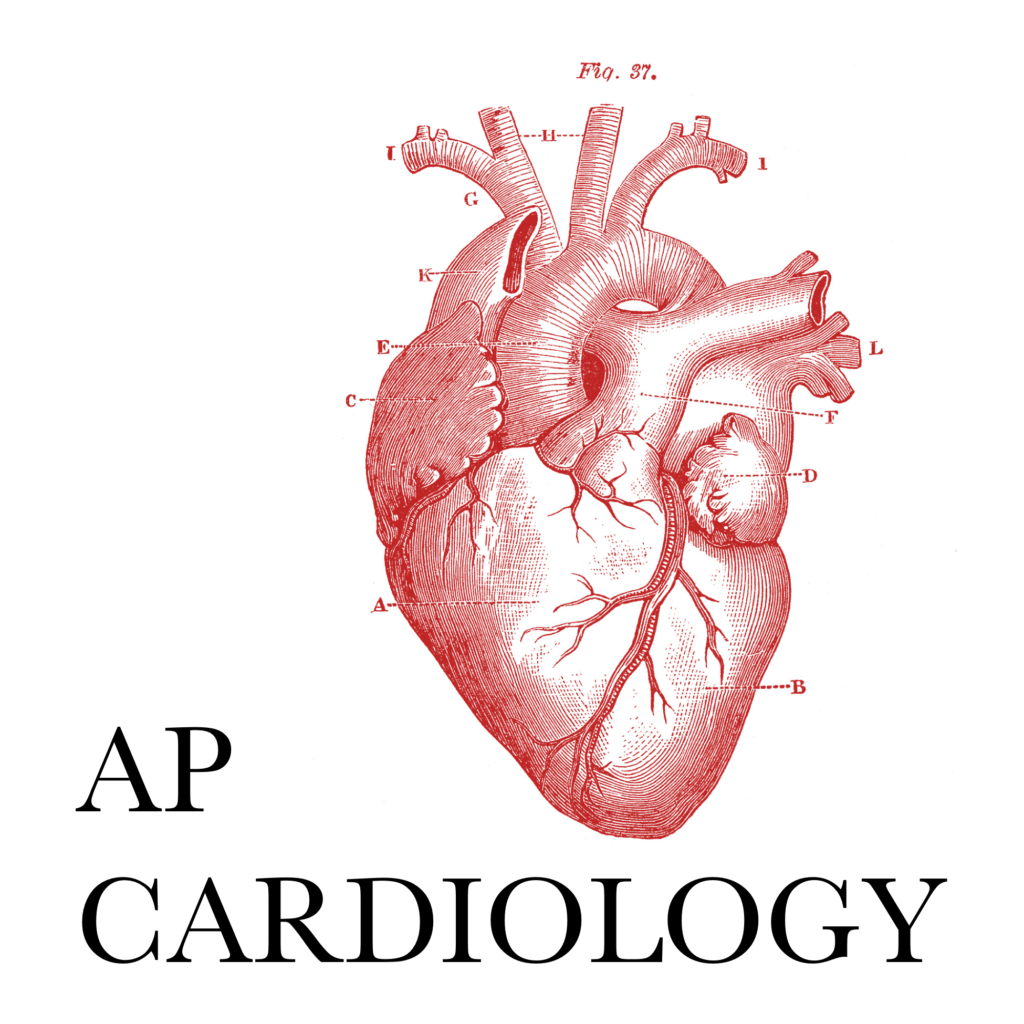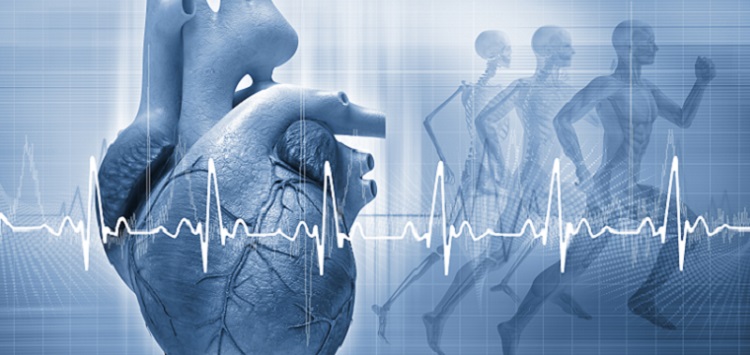Your pre-visit guide for seeing a Cardiologist near me
Your pre-visit guide for seeing a Cardiologist near me
Blog Article
Comprehending the Value of Cardiology in Modern Medical Care Services
Cardiology plays a vital function in modern-day medical care, particularly as heart disease remains to be the leading reason for death worldwide. Breakthroughs in diagnostics and therapy have changed person treatment, making it possible for earlier interventions and improved outcomes. Additionally, the shift towards precautionary cardiology equips individuals to manage their health and wellness proactively. As technology remains to advance, the assimilation of cutting-edge remedies might better redefine cardiology's influence on public health and wellness, triggering a better evaluation of emerging trends and their effects.
The Frequency of Heart Problem and Its Effect On Public Health And Wellness
Although heart problem remains the leading cause of fatality internationally, its effect extends much past private patients to influence public wellness systems and economic climates. The high frequency of cardiovascular disease places a significant stress on healthcare sources, necessitating increased financing for treatment, avoidance, and rehab programs. Public health efforts must resolve risk aspects such as obesity, smoking cigarettes, and inactive way of livings, which contribute considerably to the rising occurrence of heart conditions.Moreover, the financial concern related to cardiovascular disease is enormous, encompassing not only straight clinical costs however additionally indirect expenses connected to shed productivity and early death. Communities deal with obstacles in managing these expenses, commonly leading to variations in healthcare access and outcomes. As the population ages and lifestyle-related threats proceed to escalate, the urgency for efficient cardiology treatments comes to be vital. Resolving heart condition is not just a matter of individual health and wellness but likewise a critical public health concern.
Breakthroughs in Cardiac Diagnostics and Imaging Techniques
Recent advancements in heart diagnostics and imaging techniques have actually transformed the field of cardiology, boosting the ability to check and spot heart diseases. Strategies such as heart MRI, CT angiography, and echocardiography have ended up being progressively sophisticated, supplying thorough pictures of heart structures and functions. These modalities permit the very early identification of problems like coronary artery illness, heart failing, and valvular disorders.Moreover, developments in non-invasive diagnostics, such as wearable innovation and remote surveillance tools, have actually equipped people and medical care suppliers. These devices assist in real-time monitoring of heart rhythms and various other necessary indications, causing timely interventions. In addition, artificial knowledge is being incorporated right into imaging analysis, enhancing precision and effectiveness in medical diagnosis.
Advancements in Therapy Alternatives for Heart Issues
Current improvements in cardiology have resulted in substantial technologies in treatment options for heart disease. These consist of advanced surgical methods that improve step-by-step outcomes and emerging drugs that offer brand-new avenues for treatment. As the field advances, these advancements play a vital duty in enhancing client care and results.
Advanced Surgical Techniques
Technologies in medical methods have changed the landscape of cardiology, offering new wish for patients with heart disease. Minimally intrusive treatments, such as catheter-based interventions, have substantially decreased healing times and hospital stays. Methods like robotic-assisted surgical procedure enhance precision, enabling doctors to browse complex anatomical structures with higher precision. In addition, advancements in imaging innovation assist in real-time visualization during procedures, boosting end results. Transcatheter aortic valve replacement (TAVR) exhibits a breakthrough in treating aortic constriction, enabling shutoff substitute without open-heart surgical treatment. Furthermore, hybrid methods that combine catheter-based and medical approaches provide customized remedies for numerous heart concerns. These innovative medical methods not only enhance patient safety yet additionally increase treatment choices, highlighting the important function of development in modern cardiology practices.
Arising Therapies and medications
As the landscape of cardiology remains to progress, emerging treatments and medications play a pivotal duty in improving treatment alternatives for heart disease. Advancements such as novel anticoagulants and progressed lipid-lowering representatives have changed the administration of heart diseases, considerably decreasing patient morbidity and death. Additionally, the growth of gene therapies and regenerative medication offers encouraging opportunities for dealing with conditions formerly considered irreparable. Professional trials are consistently exposing the efficacy of these therapies, pressing the limits of traditional treatments. Moreover, the combination of electronic health and wellness modern technologies helps with tailored medicine, enabling tailored treatment strategies based on genetic and way of living elements. Collectively, these improvements emphasize the dynamic nature of cardiology, improving person outcomes and redefining criteria of treatment in modern health care.
The Duty of Preventive Cardiology in Patient Care
Precautionary cardiology plays a crucial role in client treatment by concentrating on the recognition of threat factors that contribute to heart illness. With way of living alteration strategies and early detection techniques, health care suppliers can properly reduce the incidence of cardiovascular events - Cardiology Jupiter. This positive method not only enhances client results however likewise promotes long-term health
Risk Factor Identification
While cardio conditions continue to be a leading reason of morbidity and mortality worldwide, effective risk factor recognition acts as a foundation of precautionary cardiology. Determining risk factors such as high blood pressure, hyperlipidemia, diabetes mellitus, and family members background is vital for early treatment. Health care professionals make use of different screening approaches to examine these elements, allowing for customized safety nets. In addition, comprehending a patient's way of life choices, such as smoking cigarettes and physical inactivity, further notifies risk analyses. This extensive evaluation makes it possible for clinicians to create customized treatment plans focused on mitigating risks. By focusing on risk aspect identification, health care systems can enhance individual outcomes and lower the general burden of cardio diseases, eventually contributing to enhanced public health methods and resource allowance.
Lifestyle Alteration Techniques
A plethora of studies highlights the vital duty of lifestyle adjustment approaches in reducing heart disease threat. These strategies include nutritional changes, enhanced exercise, cigarette smoking cessation, and weight administration. By adopting a heart-healthy diet regimen rich in fruits, vegetables, entire grains, and lean healthy proteins, people can lower cholesterol levels and blood pressure. Routine exercise reinforces the heart and boosts overall cardiovascular health. Furthermore, stopping smoking cigarettes substantially reduces the risk of cardiovascular disease and improves healing rates for those with current conditions. Weight administration additionally adds to cardiovascular health and wellness by alleviating various other danger aspects such as diabetic issues and high blood pressure. Carrying out these way of life transforms not Discover More just advertises specific wellness however likewise works as a cornerstone of preventive cardiology in patient treatment.
Very Early Detection Methods
Lifestyle modifications substantially add to minimizing heart disease risks, yet they are most efficient when combined with early discovery strategies. Precautionary cardiology emphasizes the significance of recognizing prospective heart issues prior to they intensify into serious problems. Methods such as blood pressure surveillance, cholesterol screening, and progressed imaging innovations like echocardiograms play important roles in reviewing cardiovascular health. Biomarkers and hereditary testing additionally improve the accuracy of early detection, permitting tailored preventative techniques. Normal cardiac threat examinations empower medical care service providers to interfere proactively, potentially preventing cardiovascular disease and strokes (Cardiology Jupiter). By incorporating these early discovery methods into regular care, individuals can take advantage of timely way of living interventions and targeted therapies, inevitably enhancing end results and enhancing lifestyle
Integrating Modern Technology Into Cardiology Practices
As developments in modern technology continue to reshape various areas, the assimilation of innovative devices and systems into cardiology methods has actually come investigate this site to be vital for boosting patient care and results. Telemedicine systems allow cardiologists to monitor clients from another location, boosting accessibility to care while reducing the concern on health care centers. Wearable tools, such as smartwatches, enable continuous heart rate tracking, informing both physicians and patients to potential problems in real-time. Furthermore, man-made knowledge (AI) is being used to examine substantial quantities of heart information, aiding in very early medical diagnosis and individualized therapy strategies. Advanced imaging methods, including 3D echocardiography, improve visualization of heart structures, resulting in a lot more precise treatments. Digital wellness documents (EHRs) enhance individual info management, guaranteeing that cardiologists have immediate access to crucial information. With each other, these technical developments are transforming cardiology, promoting aggressive monitoring and enhanced health outcomes for people with cardio conditions.
The Significance of Patient Education And Learning and Engagement
Person education and involvement play an essential role in the monitoring of cardiovascular wellness. By gearing up patients with understanding about their problems, therapy choices, and way of living modifications, doctor empower individuals to take an energetic role in their treatment. This aggressive method can bring about improved adherence to suggested medications, dietary adjustments, and exercise programs, inevitably reducing the danger of complications.Engagement additionally fosters a strong patient-provider partnership, encouraging open communication and depend on. When patients feel notified and entailed, they are more likely to voice worries and ask inquiries, which can lead to much better scientific end results. Additionally, academic sources, such as workshops or electronic systems, can boost understanding and promote self-management techniques. Generally, focusing on person education and learning and engagement is vital for improving cardio wellness, boosting lifestyle, and decreasing healthcare costs connected with cardio illness.
Future Fads in Cardiology and Their Possible Influence

Regularly Asked Inquiries
What Way Of Living Adjustments Can Minimize Heart Problem Danger?
The present question addresses lifestyle adjustments that can substantially lower heart problem danger. Cardiology care. Embracing a balanced diet regimen, involving in routine physical activity, keeping a healthy and balanced weight, handling tension, and avoiding cigarette can significantly improve cardio health and wellness
How Can I Recognize Very Early Signs of Heart Troubles?
Acknowledging early indicators of heart issues involves surveillance signs such as chest discomfort, shortness of breath, tiredness, and irregular heart beat. Timely recognition of these signs can motivate needed medical examination and intervention for far better outcomes.
What Are the Distinctions Between Cardiologists and Heart Surgeons?
The differences in between cardiologists and cardiac specialists depend on their functions; cardiologists primarily identify and manage heart disease with non-invasive methods, while heart doctors carry out procedures to remedy structural heart problems. Each plays a vital, unique duty.

Just how Usually Should I Obtain My Heart Wellness Checked?
The regularity of heart checkup varies based on individual threat variables. Normally, adults should undergo analyses each to two years, while those with status quo might need more constant analyses as recommended by healthcare specialists.
What Duty Does Genetics Play in Heart Problem Threat?
Genetics greatly affects heart problem risk, with domestic patterns suggesting inherited problems. Particular genetics can Bonuses predispose individuals to high blood pressure, cholesterol issues, and various other cardiovascular problems, highlighting the value of genetic testing in assessing heart health. Heart illness remains the leading reason of death around the world, its effect expands far past private people to impact public wellness systems and economic climates. Public wellness efforts have to deal with threat elements such as excessive weight, smoking, and less active lifestyles, which contribute substantially to the increasing occurrence of heart conditions.Moreover, the economic concern linked with heart disease is enormous, incorporating not only straight medical expenses yet also indirect costs connected to shed productivity and premature death. Preventive cardiology plays a vital duty in patient care by focusing on the recognition of threat factors that contribute to heart illness. Fabricated intelligence (AI) and device discovering are boosting diagnostics and person monitoring, allowing early discovery of heart conditions. The distinctions in between cardiologists and heart surgeons lie in their roles; cardiologists mainly identify and take care of heart problems via non-invasive methods, while cardiac surgeons perform surgical procedures to fix structural heart issues.
Report this page